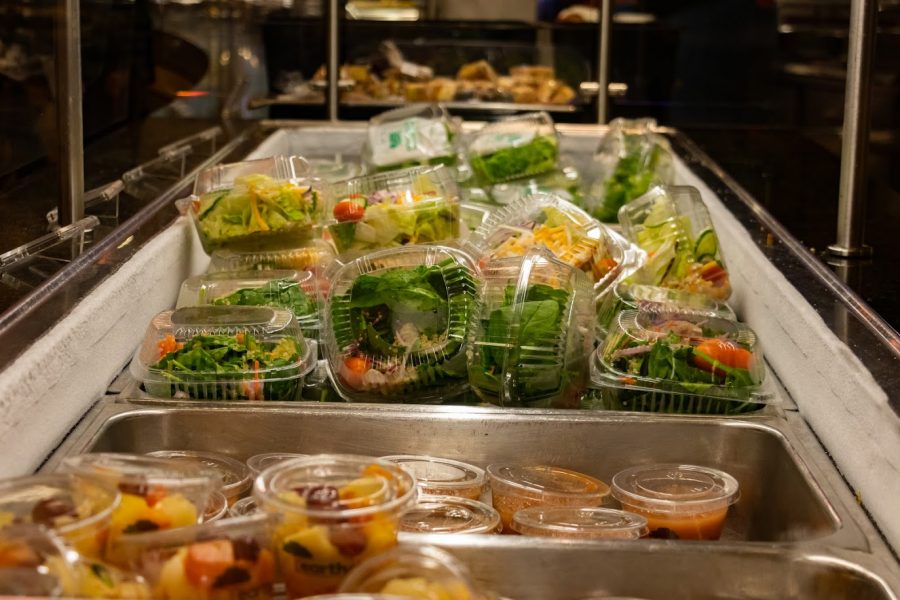Dining halls rework menus, add limited in-person dining
Prepackaged meals wait to be picked up by students at the SDRP on Friday. All dining halls are now offering in-person dining.
October 8, 2020
Since Sept. 20, students with on-campus meal plans have been allowed to participate in limited in-person dining at all dining locations.
For some dining halls, such Pennsylvania Avenue Residence Hall, 25% of the normal seating will be offered, with tables spread more than six feet apart. The typical carry-out and express options for meals are still available.
Halls like Illinois Street Residence are offering a wider variety of meal options with international inspired cuisine.
Up until two weeks ago, all dining halls served the same menu choices to avoid a certain location being favored.
Other COVID-19 precautions have been adopted. There is a line of student workers that are in the dining hall to help students pick out certain food choices and to help reduce person-to-person interactions. Dining hours have been extended from previous semesters to avoid crowding.
Get The Daily Illini in your inbox!
Melissa Schumacher, assistant director dietician for dining services, described the difficult transition over the last few months.
“We have both local and state guidelines that must be met, while feeding over 5,000 students daily, three times a day,” Schumacher said. “We have had to update our facilities, modify our menus and services and learn to engage with our customers in a different manner.”
Almost two months in, students like Rino Veljacic, sophomore in LAS, have expressed their dissatisfaction with the new dining experience.
“There is a drastic difference between the food choices; last year there was a whole variety to choose from, but this semester’s so far has been lackluster,” Veljacic said.
Veljacic said he has been skipping out on his meal swipes because “every day is essentially the same.” He’s been ordering in from Uber Eats for most nights due to the lack of variety.
Last semester, he enjoyed creating salad bowls and customization at PAR’s “late night” dining hours, and he said they were worth the relatively hefty price per meal. Now, the variety of choices has significantly decreased and dining-in is now at a 25% capacity for some halls such as PAR.
The cheapest meal plan, 12 meals with 15 cafe credits, goes for $4,800 for the academic year, $12 per meal this semester. The 10 meals-45 credits plan costs $5,514 for the year, or nearly $14 a meal.
Last year, the 12 meals per week plan cost $4,630, $170 less than the current figure, and the 10 meals plan cost nearly $200 less.
“The food shouldn’t cost ($14 a meal); stay home if you can and enjoy home-cooked meals instead,” Veljacic said.
Students like Veljacic who are currently living in a dorm have shared their frustrations of being forced to choose a meal plan, knowing the experience wouldn’t be the same as last year’s.
“I would rather dine out every day than pay ($14) for the same pasta meal every day,” Veljacic said.
Part of the semester dining fee will be prorated and reimbursed for students that leave University Housing after fall break. The dining halls will remain open, and those who stay on campus will still be able to use them.
Though the menus are fixed every week, Schumacher advises students to try different entrees and appetizers each day, as “it’s very easy to get stuck in a routine of opting to eat the same items each week.”
Food choices are regulated on a local and state basis. As the dining halls are allowed more flexibility, however, they will begin to reintroduce old favorites as well as introduce new concepts, said Carrie Anderson, administrative executive chef for residential dining.







